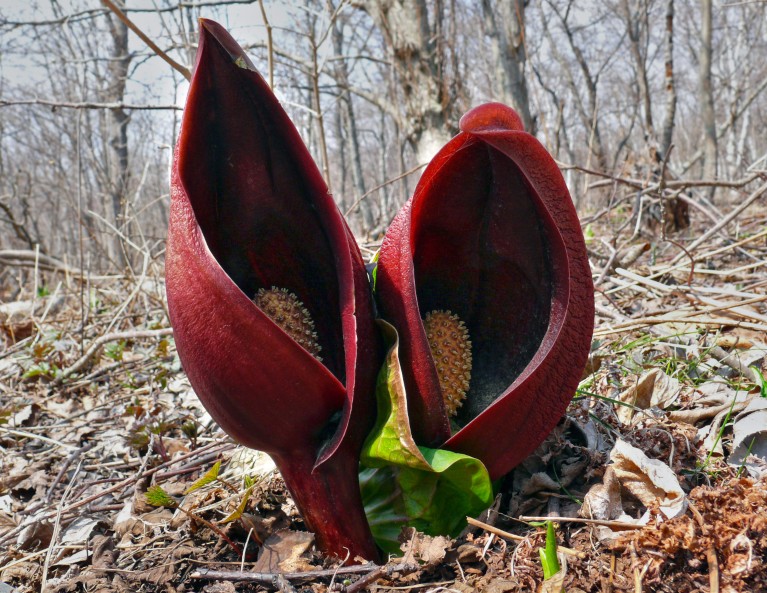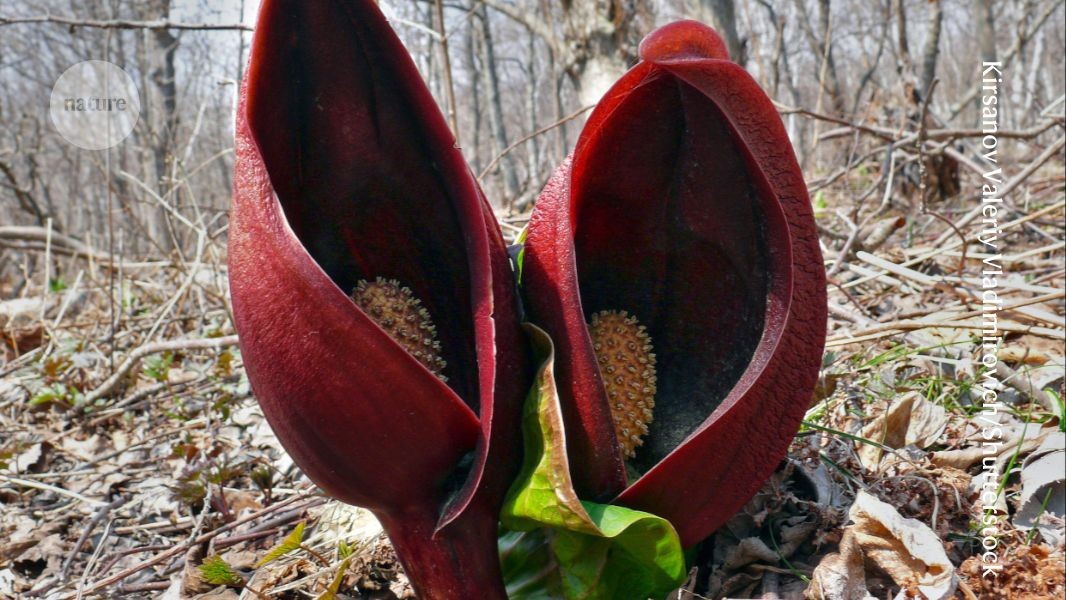
Symplocarpus renifolius emits sulfur-containing compounds that make it smell of rotting meat.Credit: Kirsanov Valeriy Vladimirovich/Shutterstock
With a nickname like ‘skunk cabbage’, the infamously stinky flowers of Symplocarpus renifolius are unlikely to grace a bridal bouquet. But for the beetles and flies that pollinate the plant, the noxious perfume of rotting meat is an irresistible draw.
Now, a sweeping study of smelly plants has revealed how skunk cabbage and several other plants concoct their malodorous aromas. The results, published today in Science1, also show that blooms that reek of faeces, rotting meat and other things that humans find off-putting are surprisingly popular in the plant kingdom. Species in one plant genus evolved the ability to make such smells repeatedly in less than 7 million years — a blink of an eye in evolutionary terms.
The study also highlights how much more there is to learn about smelly plants, says Robert Raguso, a chemical ecologist at Cornell University in Ithaca, New York, who was not involved in the study. “One recent realization has been that stinky flowers are more complicated than we thought they were,” he says. “There is still a lot of discovery to be made.”
Follow your nose
The project began when Yudai Okuyama, a biologist at the National Museum of Nature and Science in Tsukuba, Japan, launched a survey of one of the most diverse plant groups in Japan: the genus Asarum. He and his team wanted to learn more about how the drive to court different pollinators might have influenced this diversity.
Unpicking the link between smell and memories
During his survey, Okuyama noticed that some Asarum species emit the odour of rotting meat. He and his colleagues decided to harness Asarum’s diversity to learn more about how plants produce these stinky compounds. They catalogued the volatile chemicals made by the flowers of 53 Asarum species and then looked for differences in gene and enzyme activity between stinky and non-stinky Asarum species.
The approach pinpointed a class of enzymes called disulfide synthases, which convert certain sulfur-containing molecules into compounds responsible for the flowers’ stench. Okuyama and his colleagues found that similar enzymes had evolved independently in two other plant genera, Symplocarpus and Eurya. They also found that a change of merely three amino acids could convert an enzyme common in plants and animals into disulfide synthase.



